
Care Guide for Small Potted Succulents: Low-Maintenance Beauty
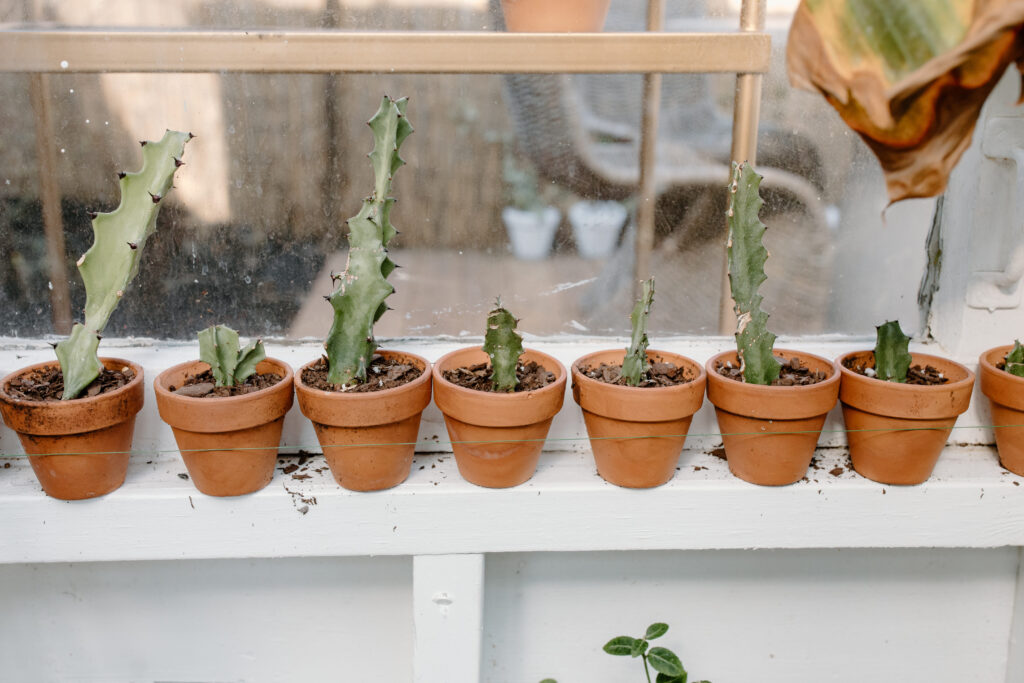
Succulents are a popular choice for indoor plants due to their unique and eye-catching appearance. These low-maintenance beauties have thick, fleshy leaves that store water, allowing them to thrive in arid conditions. Small potted succulents, in particular, have gained popularity as they are perfect for adding a touch of greenery to small spaces or for creating vibrant arrangements.
We will provide a comprehensive care guide for small potted succulents. We will cover essential topics such as choosing the right pot and soil, providing adequate sunlight and water, and preventing common issues like overwatering and pests. Additionally, we will discuss tips for propagating and repotting succulents, as well as suggestions for creative and visually appealing arrangements. Whether you are a beginner or an experienced plant enthusiast, this guide will help you keep your small potted succulents thriving and looking beautiful.
- Choose a well-draining potting mix specifically designed for succulents
- Place your small potted succulent in a spot that receives bright, indirect sunlight
- Water your succulent sparingly, allowing the soil to dry out completely between waterings
- Avoid overwatering, as succulents are prone to root rot
- Fertilize your succulent with a balanced liquid fertilizer once a month during the growing season
- Prune any dead or damaged leaves to maintain the overall health and appearance of your succulent
- Keep an eye out for pests, such as mealybugs or spider mites, and treat them promptly if detected
- Rotate your succulent every few weeks to ensure even growth and prevent it from leaning towards the light source
- If your succulent outgrows its current pot, repot it into a slightly larger container using fresh potting mix
- Enjoy the low-maintenance beauty of your small potted succulent!
- Frequently Asked Questions
Choose a well-draining potting mix specifically designed for succulents
When it comes to caring for small potted succulents, choosing the right potting mix is crucial. A well-draining mix specifically designed for succulents is essential to ensure their health and longevity.
Unlike other plants, succulents prefer soil that doesn't retain too much moisture. A well-draining potting mix allows excess water to flow through, preventing the roots from sitting in water and potentially rotting.
There are various ready-made succulent potting mixes available in the market that you can purchase. These mixes usually contain a combination of materials such as perlite, pumice, coarse sand, and organic matter. Alternatively, you can also create your own mix by combining equal parts of regular potting soil with coarse sand or perlite.
Remember, the key is to provide adequate drainage for your small potted succulents. This will help prevent waterlogged soil and keep your plants happy and healthy.
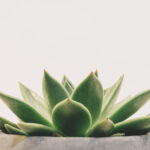 The Ultimate Succulent Dormancy Table: Your Best Resource!
The Ultimate Succulent Dormancy Table: Your Best Resource!Place your small potted succulent in a spot that receives bright, indirect sunlight
Small potted succulents are low-maintenance plants that can add a touch of natural beauty to any space. To ensure their health and longevity, it is important to provide them with the right care. One of the key factors to consider is the placement of your small potted succulent.
These plants thrive in bright, indirect sunlight. Placing them in a spot where they can receive adequate light is crucial. However, direct sunlight can be too intense for these delicate plants and may cause their leaves to burn or become discolored. Therefore, it is best to find a location that offers bright, filtered light.
Consider placing your small potted succulent near a window with a sheer curtain or in a well-lit room. This will allow them to benefit from the natural light without being exposed to harsh rays. Keep in mind that different succulent varieties have different light requirements, so it's important to research the specific needs of your plant.
Provide proper drainage for your small potted succulent
Another crucial aspect of caring for small potted succulents is ensuring proper drainage. These plants are native to arid regions and are adapted to survive in well-draining soils. Avoid using regular potting soil, as it tends to retain moisture and can lead to root rot.
Instead, opt for a well-draining succulent or cactus mix. These specialized soils are designed to provide the right balance of moisture and aeration. Additionally, consider adding a layer of small rocks or pebbles at the bottom of the pot to further improve drainage.
When it comes to watering, it's important to strike the right balance. Overwatering can be detrimental to succulents, as it can lead to root rot and other issues. To avoid this, water your small potted succulent only when the soil is completely dry. Stick your finger about an inch into the soil, and if it feels dry, it's time to water. Be sure to water thoroughly, allowing the excess water to drain out of the pot.
Fertilize sparingly and provide occasional air circulation
Small potted succulents are not heavy feeders and do not require frequent fertilization. In fact, over-fertilizing can harm these plants. Use a diluted, balanced fertilizer specifically formulated for succulents, and apply it sparingly during the growing season.
 Reviving Sun-Stressed Succulents: Tips and Tricks for Success
Reviving Sun-Stressed Succulents: Tips and Tricks for SuccessAir circulation is also important for the health of your small potted succulent. Stagnant air can promote the growth of mold and fungi, which can be detrimental to these plants. Ensure there is adequate airflow around your succulent by occasionally opening windows or using a fan to gently circulate the air.
By following these care guidelines, you can enjoy the beauty of your small potted succulents for years to come. Remember to research the specific needs of your succulent variety for tailored care instructions, and don't be afraid to experiment and learn from your plant's responses to different conditions.
Water your succulent sparingly, allowing the soil to dry out completely between waterings
When it comes to caring for small potted succulents, one of the most important things to remember is to water them sparingly. These low-maintenance beauties have adapted to survive in arid and dry conditions, making them highly drought-tolerant.
It is crucial to allow the soil to dry out completely between waterings. Overwatering can lead to root rot and other issues that can harm your succulent. To determine if your succulent needs watering, simply stick your finger into the soil about an inch deep. If it feels dry, it's time to water.
Keep in mind that different succulent varieties have different water requirements, so it's essential to understand the specific needs of your plant. Some succulents, like Echeverias and Sedums, prefer a bit more water, while others, like Haworthias and Sempervivums, thrive in drier conditions.
Remember, it's better to underwater than overwater your succulent. These plants have evolved to store water in their leaves and stems, so they can tolerate periods of drought. Over time, you'll develop a watering routine that works best for your specific succulent.
 Tips to Help Your Succulent Leaves Perk Up and Point Upwards
Tips to Help Your Succulent Leaves Perk Up and Point UpwardsProvide ample sunlight for your succulent
Succulents are sun-loving plants that thrive in bright light conditions. When caring for your small potted succulent, make sure to place it in an area with ample sunlight. Most succulents require at least 6 hours of direct sunlight each day to maintain their vibrant colors and compact growth.
If you're keeping your succulent indoors, place it near a south-facing window or any other well-lit area. Keep an eye on your plant and observe how it responds to the light. If you notice elongated or stretched growth, it might be an indication that your succulent needs more sunlight.
On the other hand, be cautious of exposing your succulent to intense afternoon sun, especially during the summer months. Some succulents can get sunburned when exposed to direct sunlight for prolonged periods. If you notice signs of sunburn, such as brown or black spots on the leaves, consider moving your plant to a spot with filtered or indirect sunlight.
Choose the right potting mix for your succulent
When it comes to potting your small succulent, it's essential to choose the right potting mix. Succulents thrive in well-draining soil that allows excess water to flow out quickly. A common mistake is using regular potting soil, which tends to retain moisture and can lead to root rot.
Instead, opt for a well-draining succulent or cactus potting mix. These mixes are specifically formulated to provide the right balance of moisture retention and drainage for succulents. You can also make your own mix by combining regular potting soil with perlite or pumice to improve drainage.
When repotting your succulent, make sure to choose a pot with drainage holes. This will prevent water from pooling at the bottom and causing root rot. The size of the pot should be appropriate for the size of your succulent, allowing room for growth without being too large.
Protect your succulent from extreme temperatures
Succulents are generally hardy plants, but they can be sensitive to extreme temperatures. It's important to protect your small potted succulents from prolonged exposure to freezing temperatures or scorching heat.
 Essential Tips for Promoting Healthy Succulent Growth
Essential Tips for Promoting Healthy Succulent GrowthDuring winter, if you live in a region with freezing temperatures, it's best to bring your succulent indoors or provide some form of protection, such as a frost cloth or a greenhouse. Cold temperatures can damage the cells of the plant, leading to irreversible damage.
In hot summer months, some succulents can tolerate high temperatures, but others may suffer from sunburn or heat stress. Consider moving your succulent to a shaded area or providing some afternoon shade to prevent damage.
By following these care guidelines, you can ensure that your small potted succulents remain healthy and beautiful. Remember to water sparingly, provide ample sunlight, choose the right potting mix, and protect them from extreme temperatures. With a little attention and care, your succulents will thrive and bring joy to your space for years to come.
Avoid overwatering, as succulents are prone to root rot
Avoid overwatering, as succulents are prone to root rot
Succulents are known for their ability to store water in their leaves, stems, and roots, making them highly adaptable to arid conditions. However, this doesn't mean that they enjoy being constantly soaked in water. In fact, overwatering is one of the most common mistakes made when caring for small potted succulents.
Root rot can occur when succulents are exposed to excessive moisture for prolonged periods. This can lead to the roots becoming mushy and unable to absorb water and nutrients effectively, ultimately causing the plant to decline.
 Common Challenges in Succulent Cultivation: How to Overcome Them
Common Challenges in Succulent Cultivation: How to Overcome ThemTo prevent overwatering, it's crucial to understand the watering needs of your specific succulent species. Most succulents prefer a "soak and dry" approach, where you thoroughly water the plant and then allow the soil to dry out completely before watering again.
When watering your small potted succulents, ensure that the water reaches the roots and drains out of the pot's drainage holes. It's essential to use well-draining soil specifically formulated for succulents to avoid waterlogging. Additionally, consider using a watering schedule and adjusting it based on the specific environmental conditions of your home or office.
Remember, it's better to underwater your succulent than to overwater it. Succulents are excellent at tolerating drought-like conditions and can bounce back from slight dehydration. However, recovering from root rot can be much more challenging for these plants.
Fertilize your succulent with a balanced liquid fertilizer once a month during the growing season
One important aspect of caring for small potted succulents is fertilization. These low-maintenance beauties can benefit from a balanced liquid fertilizer applied once a month during the growing season.
Fertilizing your succulents provides them with the necessary nutrients to thrive and promote healthy growth. A balanced liquid fertilizer typically contains equal amounts of nitrogen, phosphorus, and potassium (NPK). This balanced ratio ensures that your succulents receive a well-rounded supply of essential nutrients.
To fertilize your succulents, dilute the liquid fertilizer according to the instructions on the packaging. It's important to avoid over-fertilizing, as this can lead to burning the roots or causing irreversible damage to your plants. Always err on the side of caution and follow the recommended dosage.
When applying the fertilizer, water your succulents thoroughly beforehand. This helps to prevent fertilizer burn and ensures that the nutrients are evenly distributed throughout the soil. Gently pour the diluted fertilizer onto the soil around the base of the plant, being careful not to get any on the leaves or rosettes.
 Fixing Brown Leaves on Succulents: Troubleshooting Guide
Fixing Brown Leaves on Succulents: Troubleshooting GuideRemember, succulents are adapted to survive in nutrient-poor environments, so they do not require excessive amounts of fertilizer. Over-fertilizing can actually be harmful to their overall health.
During the dormant season, which is typically in winter, it's best to refrain from fertilizing your succulents. This is because they are not actively growing during this time and do not require extra nutrients. Instead, focus on providing them with proper lighting and minimal watering to support their natural growth cycle.
Fertilizing your small potted succulents with a balanced liquid fertilizer once a month during the growing season can help promote their growth and overall health. Remember to follow the instructions on the fertilizer packaging, dilute it properly, and avoid over-fertilizing. With the right care and attention, your succulents will continue to thrive and bring beauty to your space.
Prune any dead or damaged leaves to maintain the overall health and appearance of your succulent
Pruning is an essential task to ensure the overall health and appearance of your small potted succulents. By removing any dead or damaged leaves, you promote new growth and prevent the spread of disease.
To prune your succulent, simply use a pair of clean, sharp scissors or pruning shears. Gently remove any leaves that appear brown, wilted, or shriveled. It's important to make clean cuts close to the stem or base of the plant to minimize damage.
In addition to removing dead leaves, you may also want to consider pruning your succulent to maintain its shape and size. Succulents tend to grow in a compact manner, but they can become leggy or overgrown over time. To encourage a more compact and bushy growth, you can trim the top portion of the succulent, just above a leaf node.
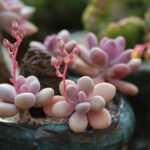 Is My Leaning Succulent a Problem? Get Answers Here!
Is My Leaning Succulent a Problem? Get Answers Here!Remember to sterilize your pruning tools before and after each use to prevent the spread of bacteria or diseases. This can be done by wiping the blades with rubbing alcohol or using a solution of 1 part bleach to 9 parts water.
Key Takeaways:
- Prune your small potted succulents to remove any dead or damaged leaves.
- Use clean, sharp scissors or pruning shears to make clean cuts near the stem or base of the plant.
- Consider pruning to maintain the shape and size of your succulent.
- Sterilize your pruning tools before and after each use to prevent the spread of bacteria or diseases.
By regularly pruning your small potted succulents, you can ensure their health and appearance, allowing them to thrive in your indoor or outdoor space.
Keep an eye out for pests, such as mealybugs or spider mites, and treat them promptly if detected
Pests can be a nuisance for any plant, and small potted succulents are no exception. Mealybugs and spider mites are common pests that can infest your succulents and cause damage if left untreated. These pesky insects can suck the sap from the leaves, leading to yellowing, wilting, and even death of your succulent.
To ensure the health and beauty of your small potted succulents, it's important to regularly inspect them for any signs of pest infestation. Look out for small white cottony masses or webbing on the leaves and stems, as these are clear indications of mealybugs or spider mites.
If you spot any pests on your succulents, it's crucial to take immediate action to prevent further damage. There are various treatment options available, including natural remedies and commercial insecticides. The choice of treatment depends on the severity of the infestation and your personal preferences.
 Dolphin Succulent Care: Top Tips and Guidelines
Dolphin Succulent Care: Top Tips and GuidelinesNatural remedies:
- Isopropyl alcohol: Dip a cotton swab or a soft cloth in isopropyl alcohol and gently wipe off the pests. This method is effective for removing mealybugs and spider mites.
- Dish soap solution: Mix a few drops of mild dish soap with water and spray it on the affected areas. Leave it on for a few minutes, then rinse off with water. This solution helps suffocate and kill the pests.
- Neem oil: Dilute neem oil with water according to the instructions on the packaging and spray it on the succulent. Neem oil acts as a natural pesticide and can effectively control pests.
Commercial insecticides:
- Insecticidal soap: Purchase an insecticidal soap specifically formulated for succulents and follow the instructions on the packaging for application. This soap kills pests on contact.
- Systemic insecticides: These insecticides are absorbed by the plant and can provide long-term protection against pests. However, it's important to read and follow the instructions carefully to ensure the safety of your succulents.
Regardless of the treatment method you choose, it's essential to repeat the process as necessary to eliminate all pests and prevent reinfestation. Regularly monitoring your succulents after treatment is also crucial to ensure that the pests do not return.
By staying vigilant and promptly addressing any pest issues, you can keep your small potted succulents healthy and thriving for years to come.
Rotate your succulent every few weeks to ensure even growth and prevent it from leaning towards the light source
Succulents are known for their ability to thrive in various environments, making them popular choices for indoor gardens. However, even low-maintenance plants like succulents require some attention to ensure their optimal growth. One important practice to incorporate into your care routine is to rotate your small potted succulents every few weeks.
Rotating your succulents helps promote even growth by ensuring that all sides of the plant receive an adequate amount of sunlight. Succulents have a natural tendency to lean towards the light source, which can result in uneven growth and an unbalanced appearance. By rotating your succulent, you encourage it to grow straight and symmetrical.
 Essential Care Tips for Growing an Elephant Trunk Succulent
Essential Care Tips for Growing an Elephant Trunk SucculentTo rotate your small potted succulent, carefully pick it up from the base, ensuring not to disturb the roots. Gently turn the plant clockwise or counterclockwise, making sure each side gets its fair share of sunlight. You can also use this opportunity to inspect the plant for any signs of pests or diseases.
Remember to take note of how your succulent was positioned before rotating it, especially if it was already leaning in a particular direction. By rotating it consistently, you can counteract any tendency to lean and maintain a balanced appearance.
Rotating your succulents is especially important if you have them placed near a window or a light source that only illuminates one side. By providing equal exposure to sunlight, you promote even photosynthesis and prevent the succulent from stretching towards the light.
In addition to rotating your succulents, it's crucial to observe their growth patterns and adjust their position accordingly. If you notice one side of the plant growing more vigorously than the other, you may want to position it closer to the light source on that side. This way, you can promote balanced growth and prevent your succulent from becoming lopsided.
Regularly rotating your small potted succulents is a simple yet effective way to ensure their overall health and aesthetic appeal. By providing equal access to sunlight and encouraging even growth, you can enjoy the beauty of these low-maintenance plants for years to come.
If your succulent outgrows its current pot, repot it into a slightly larger container using fresh potting mix
Repotting your small potted succulents is an essential step in their care routine. As these plants grow, they may outgrow their current pots, leading to root congestion and hindered growth. To ensure your succulents continue to thrive, it's important to repot them into slightly larger containers using fresh potting mix.
 Can Succulents Survive Winter Without Water? Tips for Winter Care
Can Succulents Survive Winter Without Water? Tips for Winter CareWhen selecting a new pot, choose one that is only slightly larger than the current pot. Succulents prefer snug spaces, and a pot that is too big can lead to overwatering and root rot. Additionally, opt for a pot with drainage holes to prevent excess water retention.
Here's a step-by-step guide to repotting your small potted succulents:
- Prepare your materials: Gather a new pot, fresh potting mix, and a small gardening tool.
- Remove the succulent from its current pot: Gently loosen the soil around the plant's roots, being careful not to damage them. Carefully lift the succulent out of its pot, supporting the base of the plant.
- Clean the roots: Examine the roots and remove any dead or damaged ones. Trim excessively long roots if necessary, but avoid cutting too much.
- Add fresh potting mix to the new pot: Fill the new pot with a layer of fresh potting mix, leaving enough space for the succulent's roots.
- Place the succulent in the new pot: Position the succulent in the center of the new pot, ensuring that the base of the plant is level with the rim. Gently backfill the pot with potting mix, pressing it lightly around the roots to secure the plant.
- Allow the succulent to settle: After repotting, refrain from watering the succulent for a few days to allow its roots to adjust and settle in the new pot. This will help prevent root rot and promote healthy growth.
- Resume regular care: Once the succulent has settled, resume your regular care routine, including watering, sunlight exposure, and occasional fertilization.
Remember, repotting should only be done when necessary, such as when the plant has outgrown its current pot or the soil has become overly compacted. By following these repotting guidelines, you can ensure that your small potted succulents continue to thrive and bring low-maintenance beauty to your space.
Enjoy the low-maintenance beauty of your small potted succulent!
Small potted succulents are a wonderful addition to any home or office space. With their unique shapes and vibrant colors, they add a touch of natural beauty to any environment. The best part? They are incredibly low-maintenance, making them the perfect choice for busy individuals or those who may not have a green thumb.
Choosing the Right Succulent
When selecting a small potted succulent, it's important to consider a few factors. Firstly, think about the amount of sunlight your space receives. Some succulents thrive in bright, direct sunlight, while others prefer indirect light or even shade. Additionally, consider the size and shape of the succulent. Some varieties stay small and compact, while others grow tall and wide. Choose a succulent that fits your space and aesthetic preferences.
Providing Adequate Drainage
Succulents are desert plants, meaning they are adapted to survive in arid conditions. One key aspect of their care is ensuring proper drainage. When planting your small potted succulent, make sure the container has drainage holes at the bottom. This allows excess water to escape and prevents the roots from sitting in water, which can lead to root rot.
Watering Tips
One of the biggest mistakes people make with succulents is overwatering. These plants have specialized water-storing tissues that allow them to survive long periods without water. As a general rule, water your small potted succulent only when the soil is completely dry. Stick your finger about an inch into the soil – if it feels dry, it's time to water. Be sure to water the soil directly and avoid getting water on the leaves, as this can lead to rot or fungal diseases.
It's also important to note that different succulent varieties have different water requirements. Some may need more frequent watering, while others can go several weeks between waterings. Always do a little research on the specific succulent variety you have to ensure you're meeting its unique needs.
Light and Temperature
Succulents love sunlight, but it's important to strike a balance. While they need light to thrive, too much direct sunlight can scorch their leaves. Place your small potted succulent in a location where it receives bright, indirect light for a few hours each day. If you notice the leaves turning pale or yellow, it may be a sign that the plant is receiving too much sunlight.
Temperature is another important factor to consider. Most succulents prefer warm temperatures ranging from 60°F to 80°F (15°C to 27°C). Avoid exposing them to extreme cold or drafts, as this can damage the plant.
Fertilizing
Succulents generally do not require frequent fertilizing, but a little boost of nutrients can help promote healthy growth. Use a balanced, water-soluble fertilizer diluted to half strength. Apply the fertilizer during the growing season, typically in spring and summer, following the manufacturer's instructions. Avoid overfertilizing, as this can burn the roots and harm the plant.
Pruning and Propagation
Pruning your small potted succulent is not necessary, but it can help maintain its shape and remove any dead or unhealthy leaves. Use clean, sharp scissors or pruning shears to make clean cuts. If you'd like to propagate your succulent, you can do so by taking stem or leaf cuttings and allowing them to dry out before planting them in well-draining soil.
Small potted succulents are a stunning and low-maintenance addition to any space. By following these care guidelines and providing the right conditions, you can enjoy the beauty of these unique plants with minimal effort.
Frequently Asked Questions
1. How often should I water my small potted succulents?
Succulents require less water compared to other plants. Generally, watering them once every 1-2 weeks is sufficient.
2. Can I place my small potted succulents in direct sunlight?
Yes, succulents thrive in bright sunlight. However, it is important to acclimate them gradually to prevent sunburn. Start with a few hours of indirect sunlight and gradually increase the exposure.
3. Do small potted succulents need fertilizers?
Succulents are low-maintenance plants and do not require frequent fertilization. A diluted, balanced fertilizer can be applied once or twice a year during the growing season.
4. How do I prevent my small potted succulents from rotting?
Overwatering is the main cause of succulent rot. Ensure that the soil is well-draining and allow it to dry completely between watering. Avoid using pots without drainage holes.
If you want to read more articles similar to Care Guide for Small Potted Succulents: Low-Maintenance Beauty, you can visit the Care and Maintenance category.

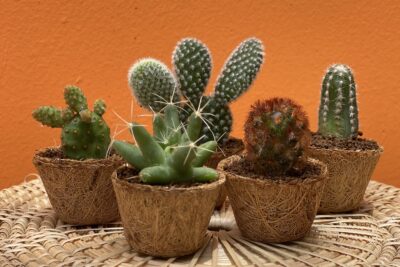
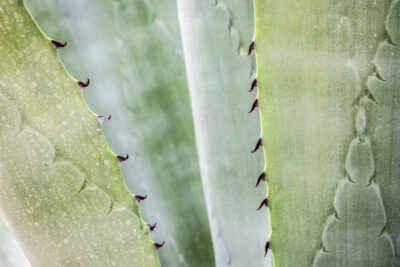



You Must Read